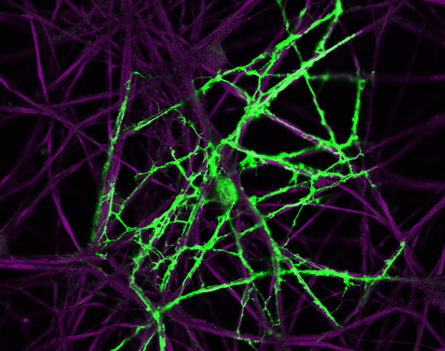- More than 2 years ago
Nerve cell communication gets better with use. A neuron’s electrical activity triggers other cells to come and slather on a protective coating that makes messages travel faster, a study published online August 4 in Science shows.
Like rubber insulation around electrical wires, myelin wraps around message-sending axons, protecting and speeding electrical impulses. Specialized brain cells called oligodendrocytes wrap up to 150 layers of this insulation around a single axon. In this image, a single oligodendrocyte (green) wraps several axons (purple).

The process begins when neurons fire off an electrical signal and the chemical messenger glutamate is released. Mouse neurons treated so they were unable to release glutamate had lower levels of myelin, Hiroaki Wake of the National Institute of Child Health and Human Development in Bethesda, Md., and colleagues found.
When the team activated normal axons, boosting their glutamate production, oligodendrocytes produced more of the fatty proteins that make up the myelin coating.
The results suggest one way that the brain quickly adapts and improves when a person practices new tasks such as playing the violin or juggling.






